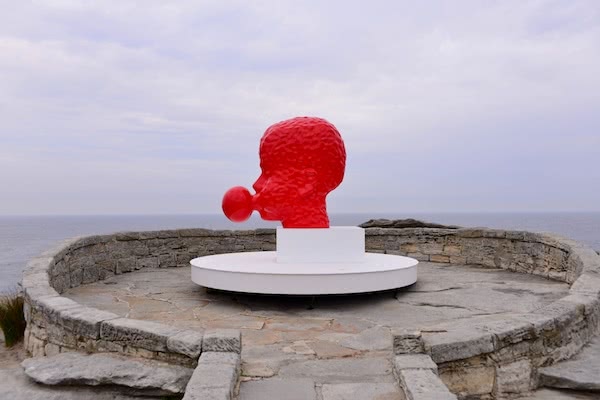The 17-year-old Sculpture By The Sea is now old enough to sneak into most pubs. Adam Norris talks with founder David Handley about how the show has evolved, and how likely he is to take the money and run.
Back in 1997, David Handley had the idea to showcase Sydney in a new light. At 31 years old he possessed the ideal blend of naivety and ambition to think capturing the world’s attention on a $400 marketing budget was a reasonable endeavour, and so, Art By The Sea was born. It died a tidy death a moment later as David realised the practicalities of exposing canvas to the elements, and so, Sculpture By The Sea took its place. Almost two decades later the show goes on, with around 500,000 visitors to the Bondi site over the three weeks the event runs.
David, a friendly, softly-spoken fellow, is suitably demure about such success.
“Holy Hellfire Shit, Batman!” he exclaims, “I always wanted it to be this big, but I had no idea what that would actually entail. I had this wonderful illusion that I could do Sculpture By The Sea as something part-time. When we finally did launch, I didn’t look up from it again for seven years.”
Though not without detractors – mostly locals unimpressed with the sudden crowds, or more likely, those who are simply frightened by statuary – the exhibition has become the largest annual sculpture event in the world. Maintaining the public and critical expectations of the show is something that David and the team are keenly aware of.
“I just wanted to create an event that excited Sydney,” he says, “but back when we approached our tenth year I said to our staff, ‘this is the year when the critics come out’. You can’t just keep getting a great public response without some kind of backlash, and sure enough it happened. But I think it’s great that there are critical reviews, that there is an expectation of what audiences will expect to see. They want to see something new, something surprising. It makes things a challenge.”
One such artwork is that of Danish artist Niels Astrup, who will be showcasing his piece on the actual ocean. Kinetic works by Japan’s Hiroyuki Kita and New Zealand’s Phil Price are other notable additions, as is the Chinese artist Qian Sihua’s giant bubble-gum blowing head. Though these are by no means the only show-stopping inclusions, the reality of submitting work to Sculpture By The Sea is something many people will overlook. “What most people don’t realise is that we can only provide very limited funding to the artists,” David explains. “We’re trying to improve that, and this year we’ve done so in one very substantial way in that each non-Sydney Australian artist is having their freight covered. It might not sound like it, but that’s a huge step forward for our artists.”
To that end, the show has received a huge boon this year in the shape of a $60,000 prize offered by the Macquarie Group. This becomes the most generous sculpture prize in NSW, and the second largest in Australia. Its significance can’t really be overstated. “For many artists, receiving $60,000 grants years of freedom. Freedom to work, to create, to travel. It also elevates the artist to the list of those who have received major art awards around the world.”
When asked if he has plans to casually award himself the prize and skip the country, David becomes thoughtful. “I tell you, one year we were really doing it tough, when suddenly this big cheque shows up for a public artwork. The same day we were waiting on news from a champagne sponsor, who in the end decided they wouldn’t sponsor cash, only champagne. Between this really substantial cheque and the champagne I thought, ‘Right. Who’s up for Rio?’” He sighs. “It would have been such a spectacular fall from grace.”
BY ADAM NORRIS
*Image: Qian Sihua, Bubble No. 5, 2013. Photo by Clyde Yee.
Sculpture By The Sea at Bondi to Tamarama Costal Walk until November 10.


































